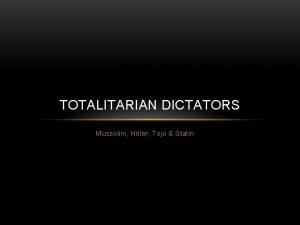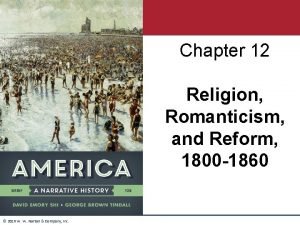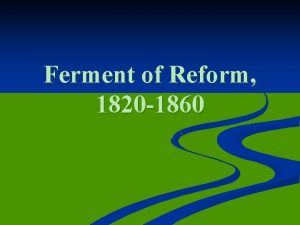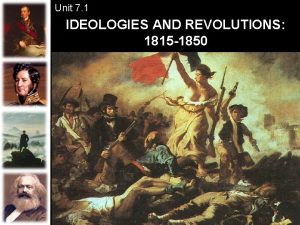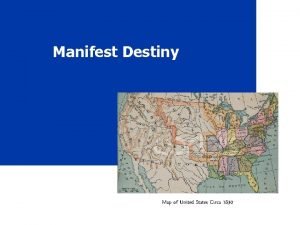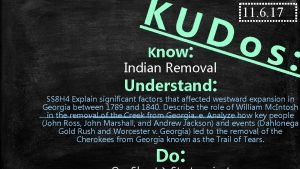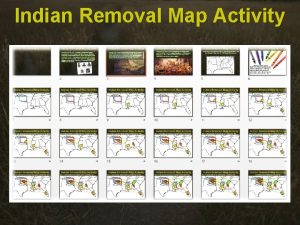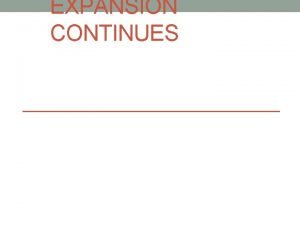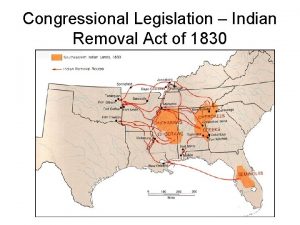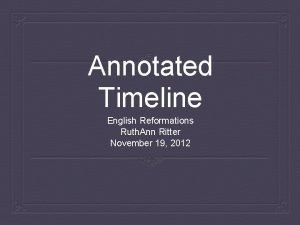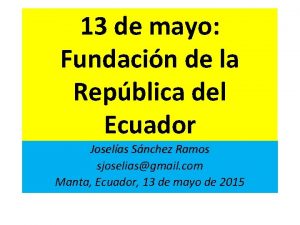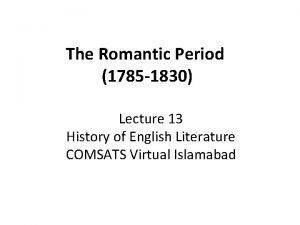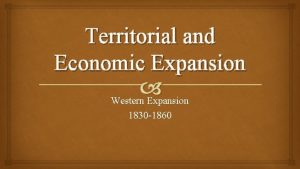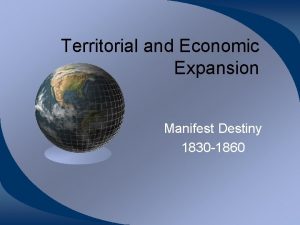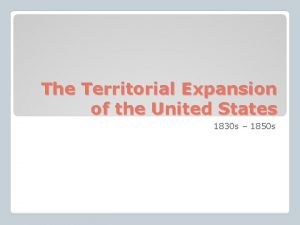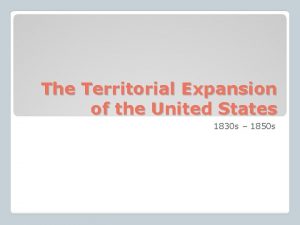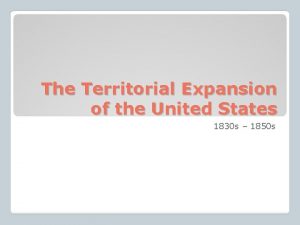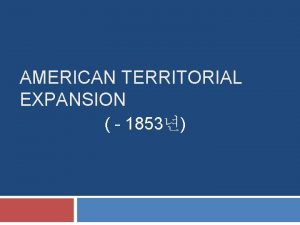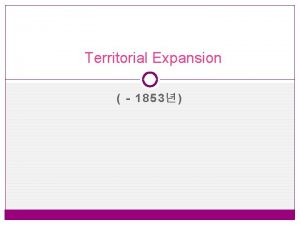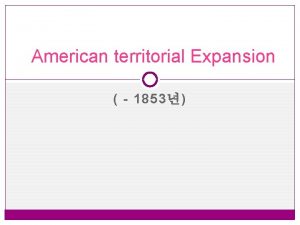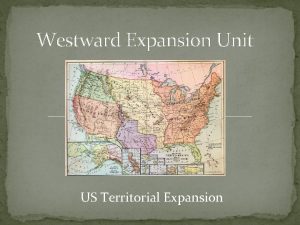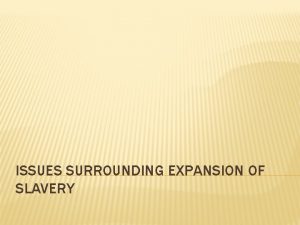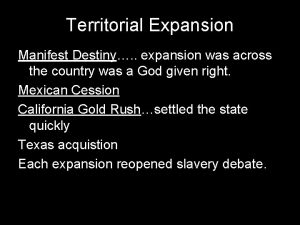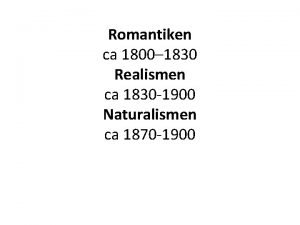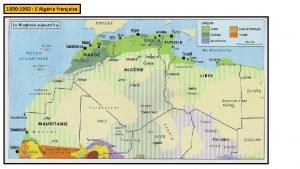Chapter 12 Territorial and Economic Expansion 1830 1860












![Treaty of Guadalupe Hidalgo [1848] • 1848 - Resolved the issue of Texas and Treaty of Guadalupe Hidalgo [1848] • 1848 - Resolved the issue of Texas and](https://slidetodoc.com/presentation_image_h/04725e4861af7fed8f87b2818d8709f2/image-13.jpg)


![Proslavery Initiatives • Pres. Franklin Pierce wanted to expand into the Caribbean [1854] – Proslavery Initiatives • Pres. Franklin Pierce wanted to expand into the Caribbean [1854] –](https://slidetodoc.com/presentation_image_h/04725e4861af7fed8f87b2818d8709f2/image-16.jpg)


![California • Northern California: grew most crops[corn and oats] to feed work horses, pigs California • Northern California: grew most crops[corn and oats] to feed work horses, pigs](https://slidetodoc.com/presentation_image_h/04725e4861af7fed8f87b2818d8709f2/image-19.jpg)
- Slides: 19

Chapter 12 – Territorial and Economic Expansion, 1830 -1860

Manifest Destiny • Coined by John L O’Sullivan • America should expand “by the right of our manifest destiny to overspread… [the] continent…”

Territorial Expansion • A means to restore confidence and prosperity lost during the Panic of 1837 • America called on the nation to expand “the area of liberty” to include lands controlled by Mexico and Native Americans • Expansion meant more land for slavery – Led to an increase of southern influence in Congress

Election of 1844 • Central issue: expansion into Texas and Oregon – Democrat: James K. Polk – Whig: Henry Clay – Northern Whigs who opposed the admission of a new slave state supported the Liberty Party: James G. Birney

The Oregon Question • Britain and the US had jointly occupied the Oregon country since 1818 – In the 1840 s, thousands of Americans settled in the region • Polk threatened war if the British did not accept the demands – Compromised reached in June 1846 • US sole ownership of the Oregon country with Britain controlling northern border

Texas Statehood • Texans sought annexation by the United States – Congress repeatedly rejected Texasstatehood bids from 1836 to 1845 • Feared war with Mexico • Dealing with the Panic of 1837 • Divided over the addition of a new slave territory

Texas Statehood • 1845 – President Tyler passes a joint resolution that admitted the Lone Star Republic to the Union – Was a lame-duck = did not win election of 2 nd term • The problems with admitting Texas as a state would be Polk’s problem

Texas Statehood • President Polk wanted: – Mexico to agree to annexation of Texas – Rio Grande as the boundary between Texas and Mexico – To buy California from Mexico

Mexican-American War • Polk pursued a two-way policy: 1. Sent John Slidell to negotiate an agreement to resolve Texas annexation and boundary problem – Also hoped to buy California for $20 -25 million 2. Sent General Zachary Taylor and 3, 500 troops to the disputed border area

Mexican-American War • When Slidell’s mission failed, Taylor moved his troops from the Nueces River [Mexico claimed as border] to south of the Rio Grande River – Mexico viewed this as an aggressive act • April 1846 – Mexican and American troops clashed • May 13, 1846 – Congress declared war on Mexico

Mexican-American War • Zachary Taylor and Winfield Scott led American troops to victory after victory • By 1848, most of Mexico was under American control • Stephen Kearney successfully seized parts of California and established American claims to the region

Mexican-American War • Although the war was a military success, it gave Polk and the Democrats political headaches – Military successes promoted the presidential aspirations of Taylor and Scott, both of whom were Whigs – The Whigs were raising charges that Polk had deliberately provoked the border incident in 1846
![Treaty of Guadalupe Hidalgo 1848 1848 Resolved the issue of Texas and Treaty of Guadalupe Hidalgo [1848] • 1848 - Resolved the issue of Texas and](https://slidetodoc.com/presentation_image_h/04725e4861af7fed8f87b2818d8709f2/image-13.jpg)
Treaty of Guadalupe Hidalgo [1848] • 1848 - Resolved the issue of Texas and gave the US control of the Mexican Cession (present-day California, Nevada, Utah, most of Arizona, about ½ of New Mexico, ¼ of Colorado, and small section of Wyoming)

Wilmot Proviso • New territories proved to be “a dose of poison” for American unity • Polk’s opponents charged him with provoking the war to satisfy a “slave power” in the South • Wilmot Proviso – Introduced during the war by Polk’s opponents – Attempted to block the spread of slavery into any new lands acquired from the war

Election of 1848 • Polk chose not to run for reelection • Democrat: Lewis Cass – Promoted squatter sovereignty: Congress would allow settlers in each territory to determine its status as free or slave • Northern democrats who opposed any expansion of slavery joined the Free Soil Party: Martin Van Buren • Whig: Zachary Taylor wins - was firmly committed to the defense of slavery, but not in the territories
![Proslavery Initiatives Pres Franklin Pierce wanted to expand into the Caribbean 1854 Proslavery Initiatives • Pres. Franklin Pierce wanted to expand into the Caribbean [1854] –](https://slidetodoc.com/presentation_image_h/04725e4861af7fed8f87b2818d8709f2/image-16.jpg)
Proslavery Initiatives • Pres. Franklin Pierce wanted to expand into the Caribbean [1854] – Pierce threatened war with Spain [who controlled Cuba] and covertly supported private military expeditions to Cuba • Secretary of State William Macey urged American diplomats to compose the Ostend Manifesto, urging Pierce to seize Cuba – Northern Democrats denounced (were against) these aggressive initiatives

Proslavery Initiatives • President Pierce desired lands south of the Rio Grande to expand the United States • He had to settle for a small slice of land in what later became part of Arizona and New Mexico – Gadsden Purchase [1854] – He was hoping to construct a transcontinental railroad through this part of the country

California Gold Rush • In 1848 gold is discovered at Sutter's Mill in the Sierra Nevada foothills – By January 1849, 61 crowded ships left New York and other eastern seaports to sail around Cape Horn to San Francisco – By May, 12, 000 wagons had crossed the Missouri River headed for the area • By the end of 1849, more than 80, 000 people, mostly men called forty-niners, had arrived
![California Northern California grew most cropscorn and oats to feed work horses pigs California • Northern California: grew most crops[corn and oats] to feed work horses, pigs](https://slidetodoc.com/presentation_image_h/04725e4861af7fed8f87b2818d8709f2/image-19.jpg)
California • Northern California: grew most crops[corn and oats] to feed work horses, pigs and chickens; potatoes, beans, peas, grapes, apples, peaches, wheat and barley • Ranchers replaced Spanish cattle with American breeds that yielded more milk and meat – Population in 1860: 380, 000 – Population in 1870: 560, 000
 Chapter 12 territorial and economic expansion
Chapter 12 territorial and economic expansion Territorial and economic expansion
Territorial and economic expansion What evidence do you see of mussolini being nationalistic
What evidence do you see of mussolini being nationalistic What economic changes in the 1830s promoted german unity?
What economic changes in the 1830s promoted german unity? Chapter 12: religion, romanticism, and reform, 1800–1860
Chapter 12: religion, romanticism, and reform, 1800–1860 Second great awakening
Second great awakening Liberty leading the people, 1830
Liberty leading the people, 1830 Ensayos constitucionales de chile entre 1823 y 1830
Ensayos constitucionales de chile entre 1823 y 1830 Map of us in 1830
Map of us in 1830 Two complaints of tejanos in 1830
Two complaints of tejanos in 1830 Indian removal act
Indian removal act Manifest destiny map activity
Manifest destiny map activity Map of america 1830
Map of america 1830 Congressional act of 1830
Congressional act of 1830 Liberty leading the people, 1830
Liberty leading the people, 1830 Constitucion de ecuador 1830
Constitucion de ecuador 1830 The romantic period 1785 to 1832
The romantic period 1785 to 1832 Emily dickinson (1830-1886)
Emily dickinson (1830-1886) Moti del 30 31
Moti del 30 31 Where did revolution spread in 1830
Where did revolution spread in 1830


